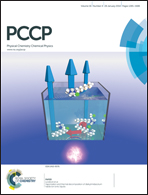Densification of a continuous random network model of amorphous SiO2 glass
Abstract
We have investigated the mechanism of densification of a nearly perfect continuous random network (CRN) model of amorphous SiO2 (a-SiO2) glass with 1296 atoms and periodic boundary conditions. The model has no under- or over-coordinated atoms and small bond length and bond angle distributions. This near-perfect model is systematically densified up to a pressure of 80 GPa using ab initio constant-pressure technique. By assessing a full spectrum of properties including atomic structure, bonding characteristics, effective charges, bond order values, electron density of states, localization of wave functions, elastic and mechanical properties, and interband optical absorption at each pressure, we reveal the pertinent details on the structural, mechanical and optical characteristics of the glass model under pressure. They all confirm the central theme that amorphous to amorphous phase transformation (AAPT) from a low-density state to a high-density state is at a pressure between 20 and 35 GPa in this nearly ideal a-SiO2 network. This pressure range represents an upper limit for such a transition in vitreous silica. The phase transformation roots from the change of Si–O bonding from a mixture of ionic and covalent nature at low pressure to a highly covalent bonding under high pressure. In addition, the calculated theoretical refractive index of the glass model as a function of the pressure is reported for the first time and in good agreement with the available experimental data.


 Please wait while we load your content...
Please wait while we load your content...